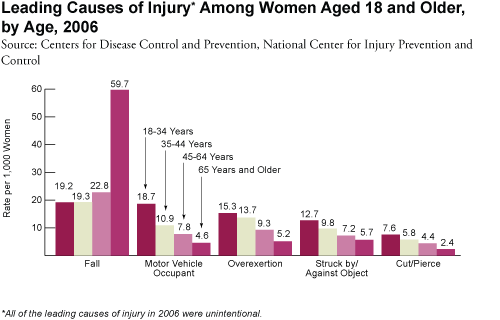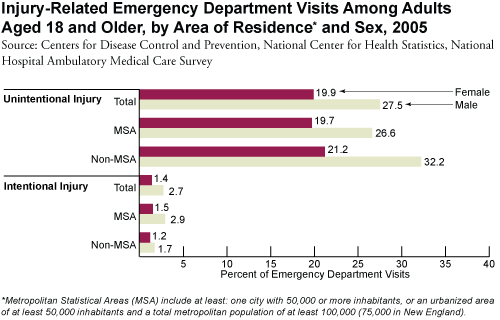Amnesty International
312 Laurier Avenue East
Ottawa, ON
Canada
K1N 1H9
From your web page: http://www.amnesty.ca/tasteforjustice/dine_out.php
"Form (SIC) June 1 to 15 restaurants in select cities across Canada will be supporting Amnesty International's work to stop violence against women by donating a percentage of their sales proceeds to Amnesty."
I read your web page, complete with typos, and its campaign with selected Canadian Restaurants favouring 50% of the population involved in Domestic Violence. DV is a serious issue but do you have plans for a similar campaign for men who suffer from this same affliction perpetrated by the gender you favour today? Somehow I think not. I will personally be boycotting these restaurants and asking my fellow men who are victims of female perpetrated violence to do so as well. In fact I would encourage them and all fair minded women to picket these restaurants for active discrimination. I will also be advising all fair minded men and women to avoid making any donations, support or "sweat equity, to Amnesty International in the future. If this is the level of research you carry out before starting a campaign you have no credibility with me at all.
You are obviously unaware that DV is pretty much equal in most western democracies including Canada. You may be unaware that female perpetrated violence in some age categories exceeds that of men in the same age category. I point you to Stats Can studies, Family violence in Canada: A statistical profile, 2005. An estimated 7% of women and 6% of men representing 653,000 women and 546,000 men in a current or previous spousal relationship encountered spousal violence during the five years up to and including 2004, according to a comprehensive Statistics Canada report on family violence. http://www.statcan.gc.ca/Daily/English/050714/d050714a.htm
US department of Health studies showing women as the main killers and abusers of their children, www.acf.hhs.gov/.../index.htm and several peer reviewed studies that will obviously surprise you. Australia's most recent stats also show mothers in concert with their boyfriends as the predominate killers of their children. Unfortunately Stats Can will not break out this data for Canada and, as a result, their information is less reliable.
GAINESVILLE, Fla. — Women are more likely than men to stalk, attack and psychologically abuse their partners, according to a University of Florida study that finds college women have a new view of the dating scene.
DURHAM, N.H. -- A 32-nation study of violence against dating partners by university partners found that about a third had been violent, and most incidents of partner violence involve violence by both the man and woman, according to Murray Straus, founder and co-director of the Family Research Laboratory at the University of New Hampshire. The second largest category was couples where the female partner was the only one to carry about physical attacks, not the male partner.
When it comes to nonreciprocal violence between intimate partners, women are more often the perpetrators.
These findings on intimate partner violence come from a study conducted by scientists at the Centers for Disease Control and Prevention (CDC). The lead investigator was Daniel Whitaker,
Ph.D., a behavioural scientist and team leader at the National Center for Injury Prevention and Control (which is part of the CDC). Results were published in the May Journal of Public Health.
Regarding perpetration of violence, more women than men (25 percent versus 11 percent) were responsible. In fact, 71 percent of the instigators in nonreciprocal partner violence were women.
This finding surprised Whitaker and his colleagues, they admitted in their study report.
Martin Fiebert maintains the most up-to-date bibliography in the English speaking world on peer reviewed studies showing DV is not a male only perpetrated offence and it can be viewed here. http://www.csulb.edu/~mfiebert/assault.htm. SUMMARY: This bibliography examines 249 scholarly investigations: 194 empirical studies and 55 reviews and/or analyses, which demonstrate that women are as physically aggressive, or more aggressive, than men in their relationships with their spouses or male partners. The aggregate sample size in the reviewed studies exceeds 241,700.
I want to repeat DV is a serious issue but it is not a single gender female problem. It will never get resolved by castigating males and placing females as martyrs. Those of us who have been attacked with 4.5' rake handles, 10 lb water jugs, had heavy objects thrown and been physically attacked with fists flailing and been financially and emotionally abused at the hands of females are not impressed. We are a larger population than you would have thought and we can also become "battered men." Most of us are too ashamed to report it when it happens and go public after the fact due to social mores. Only about 10-18% of males report DV to the police. Hardly any report emotional or financial abuse. At least in my community the police do arrest females and there is less to fear by men in reporting DV when it happens. In many communities the man gets arrested even though the female was the perpetrator.
I am also including an article by Don Dutton, in the National Post from 2006, to demonstrate an example of DV designed to capture the essence of the problem and its optics.
Michael Murphy 
Sault Ste. Marie ON P6A6J8
http://parentalalienationcanada.blogspot.com/
Cc Lucie Ogrodnik, Manager, Family Violence Program, Stats Canada

Wednesday, June 14, 2006
Domestic violence isn't one-sided
Don Dutton, National Post Published: Wednesday, June 14, 2006
A few years ago, a woman arrived home from work in Saskatoon to find her husband, who had obviously spent the day drinking, complaining of irritation with their fractious child. She insisted she needed to rest before making dinner. She awoke to find him in a rage straddling her and brandishing a kitchen knife, which he used to cut her abdomen. Bleeding, terrified, she managed to call 911. The police arrived within minutes. They observed her plight, spoke to her husband and then, responding to the unspoken but powerful institutional guidelines routinely applied in such cases, arrested ... her. In spite of her wound, she spent the night in a jail cell, and was released the next morning.
As it stands, this story makes no sense -- and indeed would have aroused national indignation if it were completely true. But I deliberately misled the reader on one particular. In the real story, by no means a unique one in police archives, the genders were reversed: The man arrived home after a 12-hour shift; the child's mother was drunk; the man lay down; the woman stabbed him in a rage; the police didn't take his injuries seriously; they accepted the woman's explanation -- probably self-defence -- and arrested the man.
Unfortunately, such gender bias in the law-enforcement system and beyond is typical, not exceptional. A double standard for men and women, applied in cases of intimate partner violence (IPV) -- as well as in family law, including spousal support and child custody cases -- has become commonplace in most Western societies over the last 25 years. And in spite of a widening stream of incontrovertible statistical evidence to the contrary, the myth persists that it is women, and only women, who are the victims of IPV.
The stereotype that unprovoked men purposefully assault women, and never the reverse, is so ingrained in our public discourse that participants in research on IPV -- not just lay people but health professionals as well -- presented with a scenario in which one partner abuses another, perceive it as abuse only if the assaulter is identified as male.
The reality, borne out by independent peer-reviewed studies as well as StatsCan, is that women commit more severe IPV, and more IPV in general, than men. For all kinds of relationship types, females are unilaterally more violent than males to non-violent partners. More females strike first in IPV (men are conditioned not to strike first in our society) and, contradicting received wisdom, fear of their male partner is rarely a factor amongst violent women. Actually, both male and female victims of IPV report equal fear levels of "intimate terrorism".
Of course, some battering males abuse passive women -- about 3% annually, far fewer than implied in skewed studies by women's groups. But in spite of sensationalized cases, spousal homicide perpetrated by either sex is extremely rare. As many mothers as fathers practice child abuse alone or in tandem, and far more women than men murder their children.
Interestingly, IPV occurs more frequently in lesbian than in heterosexual relationships, supporting the view that relationship dynamics, not gender, fuel domestic violence. Honest research points to a norm of "assortative mating": The violence-prone tend to seek each other out for anti-social behaviour.
And yet our government, our social services and our judiciary prescribe remedies based on a false and simplistic view that denies not just the unprovoked violence committed by women in relationships, but the number and severity of the assaults engaged in by both partners in mutually violent couples.
Indeed, it is fair to say that no other area of established social welfare, criminal justice or public health depends on such weak and biased evidence in support of mandated practice as does IPV. The model of "treatment" for IPV that flows from this false understanding is not the kind of therapy that could benefit both male and female perpetrators. Instead, our system prefers "intervention" -- against men, never women --and a "psychoeducational" model of behaviour modification that essentially amounts to inculcating the radical feminist political viewpoint.
Where does the gender bias come from? Ideology. Radical feminism insists that men -- all men -- by their nature pursue power and control for its own sake. As a result, we become complicit in the myths of gender politics. So when a crazed individual male with a bizarre personal back story shoots women, we hold candlelight vigils. But when a vengeful woman cuts off a man's penis, he becomes fodder for standup comedians, while she is hailed as a symbol of female empowerment.
IPV is a serious issue in our society. Responding to it through the default demonization of one sex and victimization of the other is an insult to scientific integrity, a stumbling block to rehabilitation, a strong contributing factor in many arbitrarily ruined lives, and a shameful blot on our human rights record.
- Don Dutton is Professor of Psychology at the University of British Columbia and the author of Rethinking Domestic Violence.
Copyright © 2007 CanWest Interactive, a division of CanWest MediaWorks Publications, Inc.. All rights reserved.







No comments:
Post a Comment